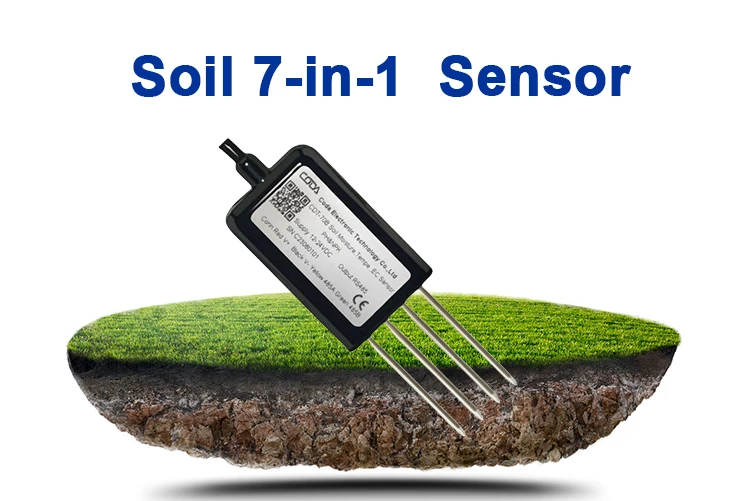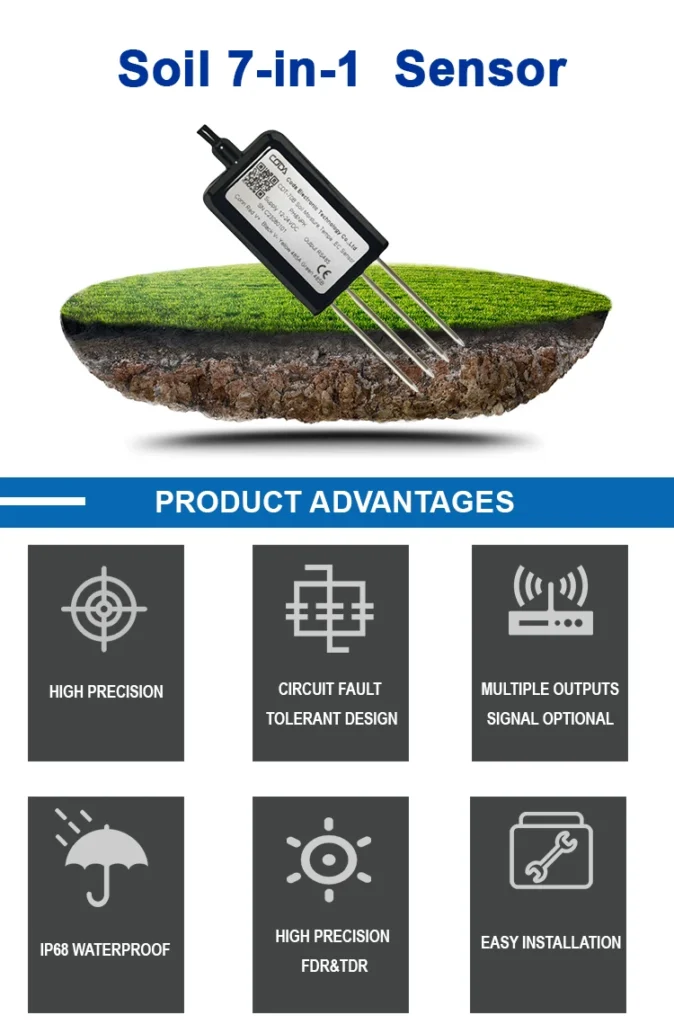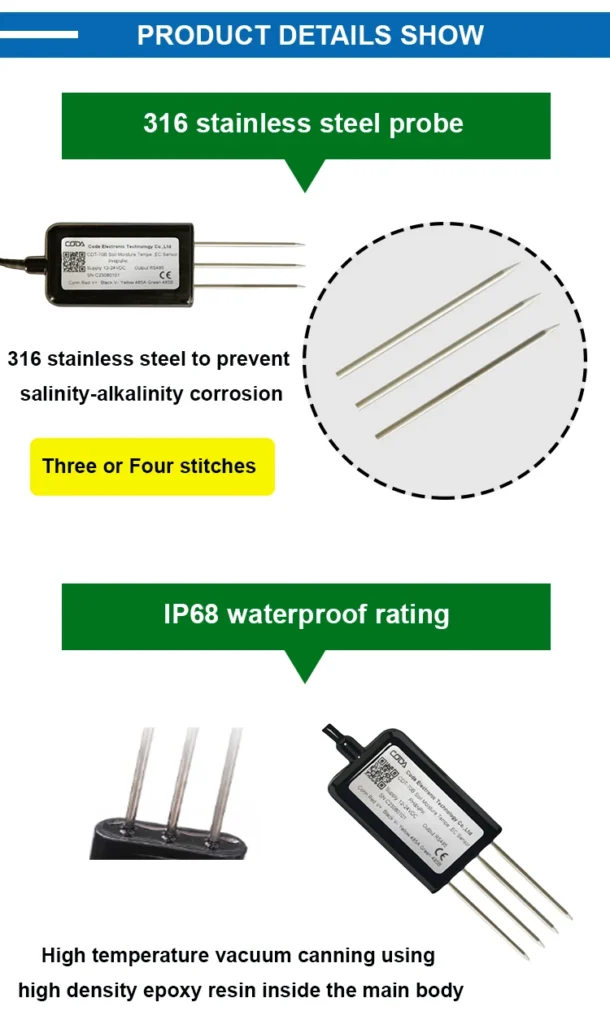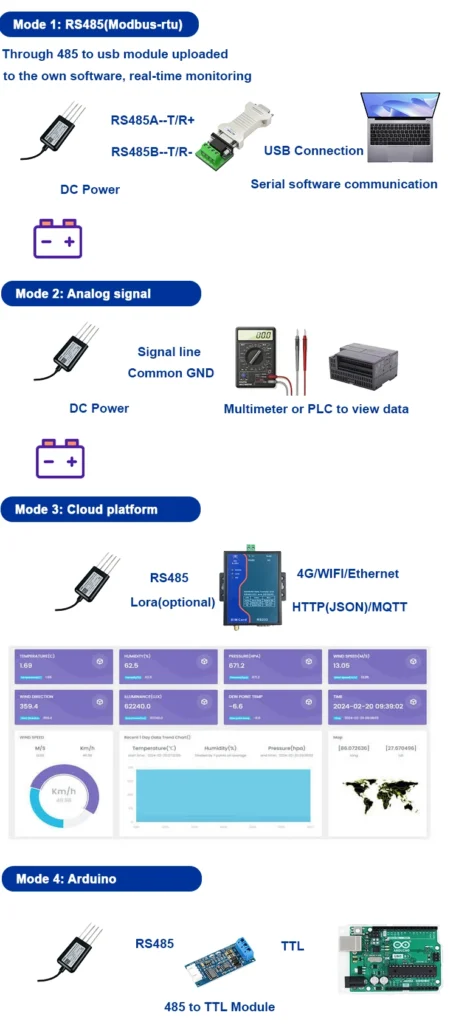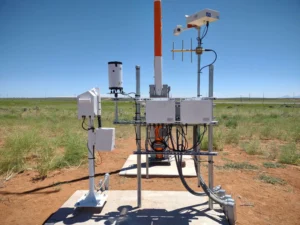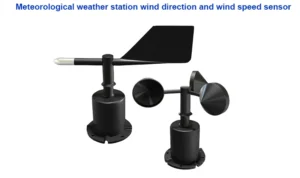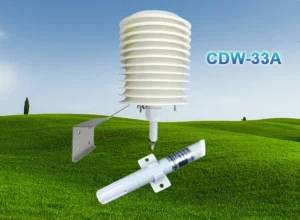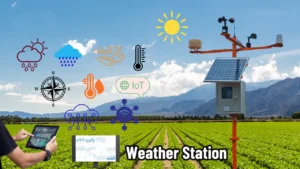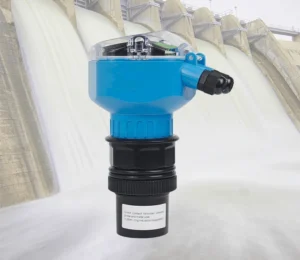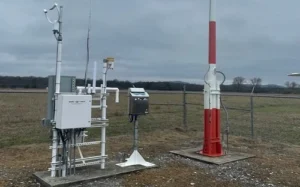Application of NPK Sensors in Agriculture | agri npk
In modern farming, managing soil nutrients well is important. It helps improve crop yields, ensures food security, and supports sustainable practices. Nitrogen (N), phosphorus (P), and potassium (K) are three key nutrients.
They are very important for plant growth and development. NPK sensors are useful tools. They help farmers keep track of and manage key nutrients in the soil.
This article discusses the importance of NPK sensors. It explains how they work, their uses, challenges, and future in agriculture.
1. Significance of N, P, and K in Crop Growth
Nitrogen is a key part of proteins, nucleic acids, and chlorophyll in plants. It helps plants grow strong. It improves leaf growth and increases the total biomass of crops.
A good supply of nitrogen is important for high-quality yields. Using too much can cause problems for the environment. These issues include nitrate leaching and greenhouse gas emissions.
Phosphorus helps with energy transfer. It also supports photosynthesis and root growth. It plays a critical role in seed germination, flowering, and fruit formation. Soils without phosphorus can cause plants to grow slowly, take longer to mature, and have lower quality crops.
Potassium helps keep plants strong. It controls how plants take in water and boosts their resistance to diseases. It also makes the quality of harvested products better.
For example, it increases the sugar in fruits and the protein in grains. A lack of potassium makes plants more susceptible to drought, pests, and diseases.
2. Working Principles of NPK Sensors
2.1 Galvanic Sensors
Galvanic NPK sensors work by measuring the electrical differences created by chemical reactions with nutrient ions in the soil. A nitrate-selective electrode is a sensor that measures nitrogen levels.
This electrode binds specifically to nitrate ions in the soil solution. The change in electrical potential is connected to the amount of nitrate ions. This can be turned into a measurable nitrogen level in the soil.
These sensors are simple and cost-effective. They can give real-time data on nutrient levels.
2.2 Spectroscopic Sensors
Spectroscopic NPK sensors study how light interacts with soil or plant samples. There are two types of these sensors: near-infrared (NIR) sensors and visible-near-infrared (Vis-NIR) sensors.
Different nutrients in the soil or plant tissues absorb and reflect light at certain wavelengths. These sensors measure how much light absorbs or reflects in the NIR or Vis – NIR spectrum.
This helps them find the levels of nitrogen (N), phosphorus (P), and potassium (K). The nitrogen in plants affects how much chlorophyll they have. Cela influence à son tour les motifs d’absorption de la lumière dans la région NIR.
Spectroscopic sensors give fast, precise, and safe measurements. This makes them great for large-scale field use.
3. Applications of NPK Sensors in Agriculture
3.1 Precision Fertilization
One main use of NPK sensors is for precision fertilization. Traditional fertilization methods often use a blanket application of fertilizers. This can lead to too much fertilizer in some areas and not enough in others. NPK sensors help farmers check the nutrient levels in their fields accurately.
By collecting data from different spots in the field, farmers can create nutrient maps. These maps show how N, P, and K vary across the field. Using these maps, farmers can use variable-rate fertilization equipment.
This equipment puts fertilizers right where farmers need them in different parts of the field. This lowers fertilizer costs and reduces environmental harm from too many nutrients in water and air.
3.2 Crop Monitoring and Growth Management
NPK sensors help check the nutrient levels of crops as they grow. By regularly checking the nutrient levels in the soil or plant tissues, farmers can find nutrient problems early. For example, if a NPK sensor in a cornfield finds low nitrogen in the soil, the farmer can act quickly.
They can add more nitrogen fertilizer. Using sensor data for quick action helps grow crops better, improve their quality, and increase yields. NPK sensors can work with other sensors, like moisture and temperature sensors.
This helps us understand the crop’s growing environment better. It also helps make better management decisions.
3.3 Soil Health Assessment
Regular use of NPK sensors contributes to the assessment of soil health.
Farmers can watch long-term trends in soil nutrients. This helps them see how well their fertilization works. They can also check the overall health of the soil. Soil nutrient levels can drop over time.
This may mean that farmers need to use soil additives or change their crops to keep the soil healthy. NPK sensors help locate areas in the field where the soil is getting worse. This happens due to nutrient loss or imbalances. Farmers can take steps to make the soil better.
3.4 Sustainable Agriculture
NPK sensors play a crucial role in promoting sustainable agriculture. By using less fertilizer, we can save natural resources, reduce pollution, and protect ecosystems.
Using sensor data for precise fertilization helps us use nutrients more efficiently. This also lowers the carbon footprint from making and applying fertilizers.
NPK sensors help increase crop yields and quality. This helps ensure food security and eases pressure on land resources. This eco-friendly way of farming is very important.
It helps meet the rising global need for food. At the same time, it protects the environment for future generations.
4. Challenges and Solutions
4.1 Cost-effectiveness
One of the main challenges in the widespread adoption of NPK sensors is their cost. High-quality NPK sensors, especially spectroscopic ones, can be costly to buy and set up. Also, the cost of keeping and adjusting these sensors over time adds to the total expense.
To solve this problem, researchers are working on creating cheaper sensor technologies. For example, the use of micro – mechatronic systems (MEMS) technology can reduce the manufacturing cost of galvanic sensors. Governments and agricultural groups can give money or support to help farmers buy NPK sensor systems.
4.2 Data Management and Interpretation
NPK sensors produce a lot of data. This data needs to be managed and understood correctly. Farmers might not have the skills or tools to analyze and understand the data well. To solve this problem, developers make easy-to-use software and data analysis tools.
These tools can help farmers visualize the data in the form of maps and graphs, identify trends, and make data – driven decisions. Training programs can help teach farmers how to use NPK sensors. They will learn how to manage data and understand the results.
4.3 Sensor Accuracy and Calibration
NPK sensors can be less accurate due to different factors. These factors include the type of soil, the level of moisture, and the temperature. Different soil types and the amount of organic matter can affect how well the sensor measures nutrients.
Regular calibration is needed to make sure sensor data is reliable. Calibration procedures can take a lot of time and can be complex. This is especially true for farmers who have limited technical knowledge.
To make sensors more accurate, researchers are creating stronger designs. These designs will be less affected by environmental factors. Automated calibration systems are being studied to make the calibration process easier and ensure steady accuracy.
5. Future Prospects
The future of NPK sensors in farming looks bright. As technology grows quickly, experts believe NPK sensors will be more accurate, cheaper, and easier to use. Using new technologies like the Internet of Things (IoT), artificial intelligence (AI), and blockchain will enhance their skills.
NPK sensors with IoT can link to a network of other sensors and devices. This allows for real-time data sharing and remote monitoring. AI algorithms can look at the large data from NPK sensors. This helps us make better predictions and suggestions for managing crops.
Farmers can use blockchain technology to make fertilizer use clear and traceable. This helps promote sustainable and responsible farming practices.
In conclusion, NPK sensors have changed how we manage nutrients in farming. Their use in precise fertilization, crop monitoring, soil health checks, and sustainable farming can change traditional farming.
This change can make farming more efficient and productive. It can also be better for the environment. While there are still challenges, research and new technology are helping NPK sensors become essential in modern farming.
